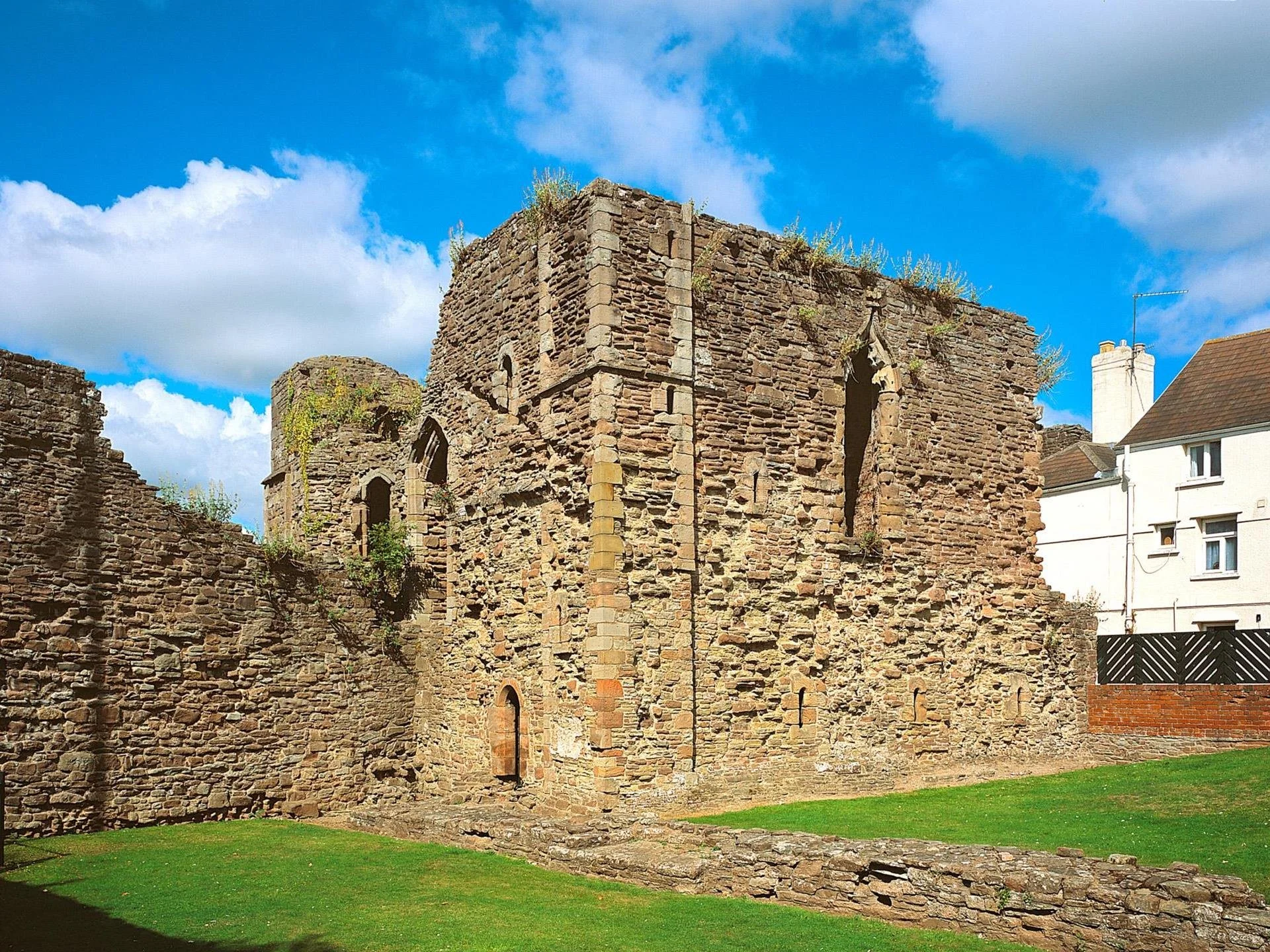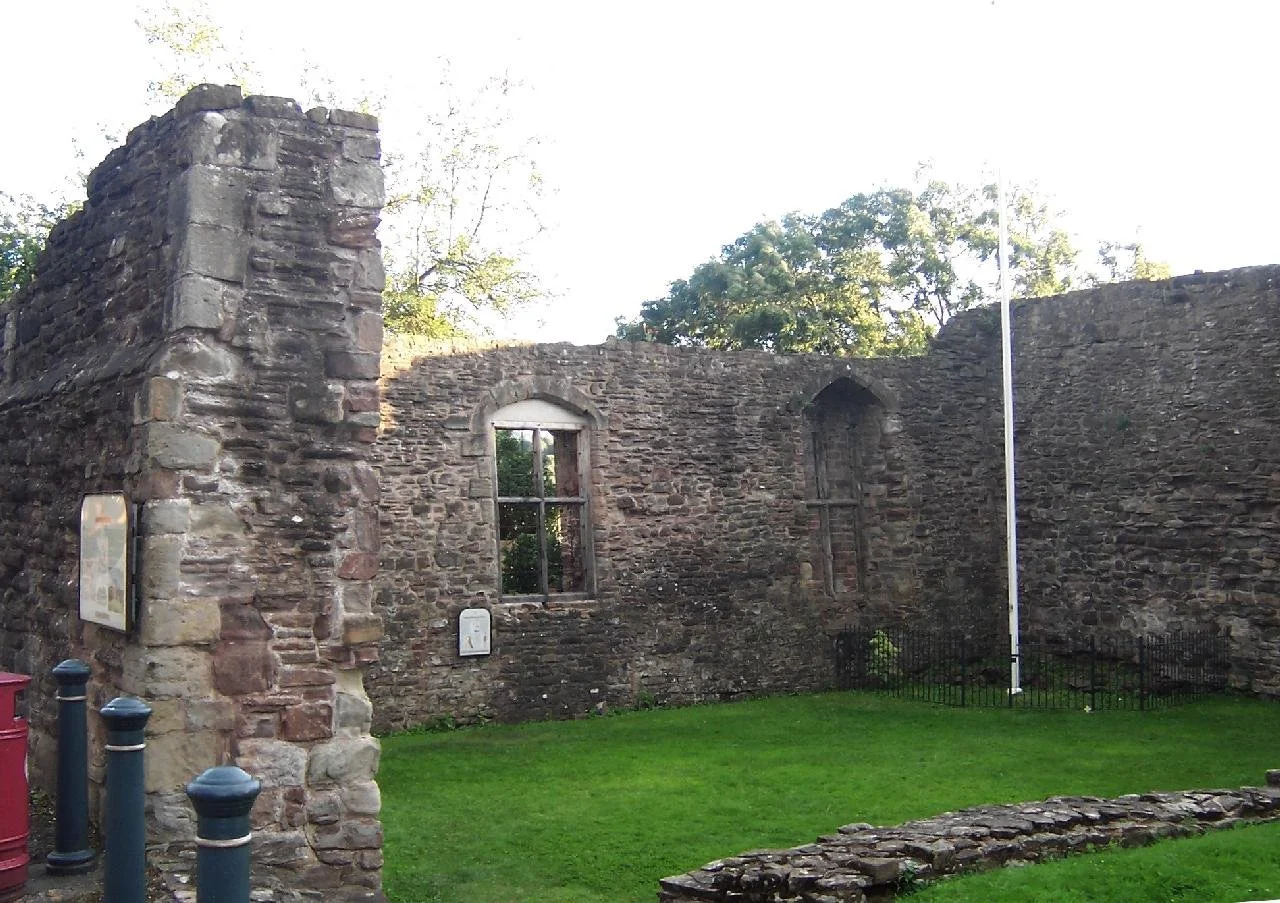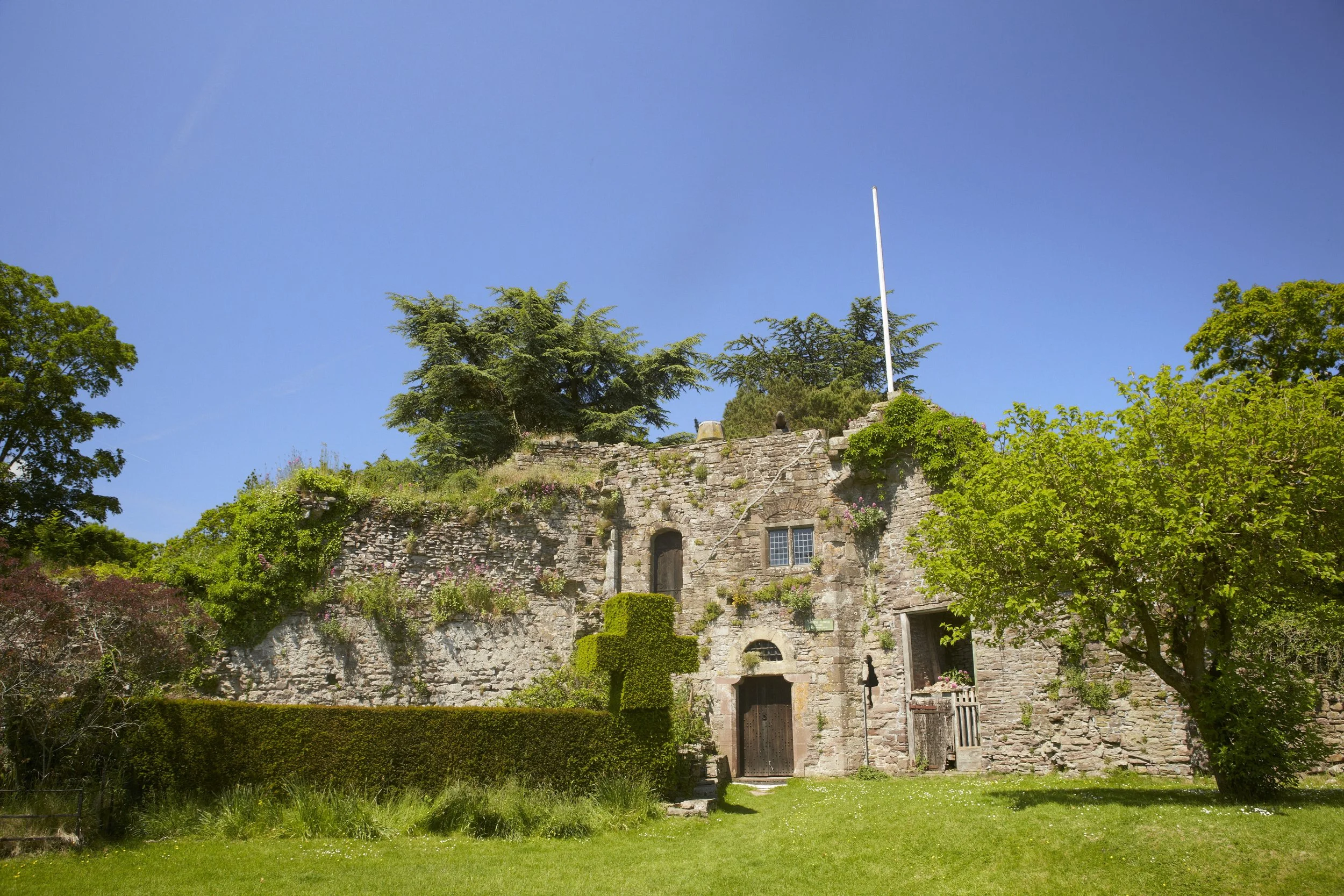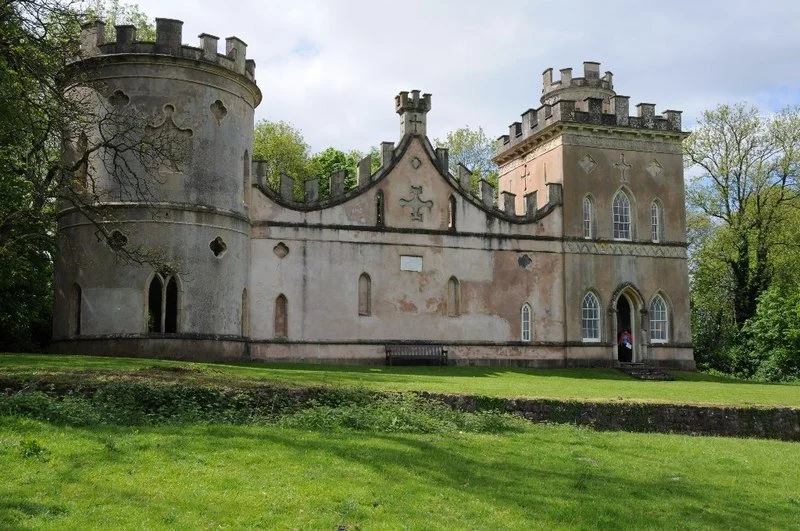Monmouth Castle | Visit Amazing Welsh Castles
Monmouth Castle is a partly ruined Norman stronghold in the historic town of Monmouth, South Wales.
It overlooks the River Monnow and held military and administrative importance from the 11th century until the English Civil War. Today, the remains are accessible to the public and form part of a site that includes the Monmouth Regimental Museum.
Quick Facts
Built: Late 11th century
Founder: William FitzOsbern, 1st Earl of Hereford
Type: Norman motte-and-bailey, later stone fortifications
Location: Monmouth, Monmouthshire, South Wales
Current condition: Partial ruins
Notable use: Birthplace of King Henry V
Managed by: Monmouthshire County Council
Entrance fee: Free entry
Access: Open year-round; adjacent to Monmouth Regimental Museum
Brief History
William FitzOsbern established the castle shortly after the Norman Conquest. The site was chosen for its strategic location near the River Monnow. Initially built as a wooden motte-and-bailey structure, the castle was rebuilt in stone during the 12th and 13th centuries.
During the medieval period, the castle served both defensive and administrative roles. In 1387, it became notable as the birthplace of Henry of Monmouth, later King Henry V of England.
It passed through the hands of several noble families. In the 16th century, it fell into disuse. During the English Civil War, Parliamentarian forces slighted the castle in 1647 to prevent further military use. Parts of the gatehouse were later converted into a house, and the Great Tower was largely dismantled.
Today, the remaining ruins are open to the public and form part of a military museum site.
Features and Layout
It originally followed the typical Norman motte-and-bailey design. Over time, the wooden structures were replaced with stone, including a curtain wall, round tower, and gatehouse.
The most prominent surviving feature is the Great Tower, also known as the keep, although it is heavily ruined. Part of the curtain wall still stands, along with sections of the 12th-century hall and later additions such as the gatehouse, which was adapted into a residence in the 17th century.
The site is relatively compact, as it lies within Monmouth’s town centre. Although much of the castle was dismantled, the visible remains sit within Castle Hill and form part of the grounds of the Monmouth Regimental Museum. A stone stairway and traces of the original inner bailey can still be seen.
Did You Know?
The castle’s gatehouse was converted into Great Castle House in 1673. It later became the headquarters of the Royal Monmouthshire Royal Engineers — the only regiment in the British Army with the word "Royal" twice in its title.
Images



Legends and Stories
One of the most enduring associations with the castle is its connection to King Henry V, who was born there in 1387. While there is no surviving birth chamber, the town celebrates this royal link with commemorative plaques and heritage trails.
A local tale, shared in visitor reviews on platforms like TripAdvisor, mentions that stones from the castle were reused in nearby buildings after its partial demolition. Some locals believe that this “living stone” carries echoes of the castle's past into Monmouth's newer structures.
Volunteers at the adjoining Monmouth Regimental Museum also recount the regimental myth that ghostly footsteps have been heard near the ruins, especially during quiet hours, though no formal record of hauntings exists.
Visiting
It is managed by Cadw and open all year, from 1 April to 31 March, during reasonable daylight hours. Entry is free. Dogs are welcome, except on lead, and smoking is not permitted within the site.
The Castle and Regimental Museum operates from 1 April to 31 October, daily from 14:00 to 17:00. Admission is free, with donations welcomed.
The castle lies just off Monmouth town centre, near Monnow Street/Priory Street & Castle Hill by Iceland store. Nearest car park is in Glendower Street; Lydney train station is about 14 miles away.
Facilities
Free entry; donations welcomed at the museum
Limited disabled access; site is mostly level terrain (walking difficulty rating 1)
No public toilets on site; use facilities in nearby town centre
Dogs allowed (except in museum)
Nearby Attractions
Explore these notable sites within walking distance or a short trip from the castle:
Monnow Bridge and Gate
Britain’s only surviving fortified river bridge with its gatehouse still standing. It carries the Monnow Heritage Trail past the castle area.
Church of St Thomas the Martyr
Adjacent to Monnow Bridge, this Grade II* building features a Norman chancel arch dating from ~1180.
Great Castle House
Built on the site of the old castle gatehouse, now an architecturally significant town house along Castle Hill.
Shire Hall
A Grade I listed former courthouse in Agincourt Square. Visit the courtroom and cells, plus learn about the 1839 Chartist trial of John Frost.
The Savoy Theatre
Wales’ oldest working theatre-cinema combining Victorian charm with live shows and film screenings.
The Nelson Garden
Historic 19th‑century garden once used for a tea party in honour of Lord Nelson; now a tranquil spot on the Heritage Trail.
Other steps of the Monmouth Heritage Trail include Blestium Roman fort remains, Drybridge House, St Mary’s Priory Church, and more of the town’s 24 listed buildings.
The wider Monmouthshire area also offers castle sights such as Raglan, Chepstow, White Castle, Grosmont and Skenfrith. These can be visited via the historic Three Castles Walk, a 19‑mile circular route linking three medieval strongholds.
Visitor Tips
Wear sturdy footwear; some surfaces are uneven.
Check opening times before visiting Shire Hall or the Savoy Theatre.
Pause in Castle Hill square to view the architecture of Great Castle House.
Combine your visit with a stroll across Monnow Bridge onto Overmonnow.
Pick up the Monmouth Heritage Trail map (available online or at visitor centres).
Visit outside rainy days to enjoy Nelson Garden comfortably.
FAQs
-
Entry to Monmouth Castle is free. The adjoining Regimental Museum is also free to enter, though donations are welcome.
-
Yes. Dogs are allowed on lead at the castle site. However, they are not permitted inside the Regimental Museum.
-
The castle is open year-round during daylight hours. To visit the museum, plan between April and October, from 2pm to 5pm daily.
-
The closest public parking is available at Glendower Street Car Park. It is a short walk to the castle, which is signposted from Monnow Street and Castle Hill.
-
The site has mostly level access and compact terrain, but some uneven surfaces remain. There are no dedicated toilet facilities, and step-free access inside the museum is limited.
Wrapping it Up
This castle offers a compact yet historically significant site in the centre of Monmouth. Its Norman origins, royal connections, and later role in British military heritage make it an informative stop for those interested in medieval and early modern history. Combined with free access and proximity to other local attractions, the castle provides a worthwhile visit for anyone exploring South Wales.
Sources
Cadw
Official Cadw page describing opening times, free entry, dog policy, terrain and other visitor information.
https://cadw.gov.wales/visit/places-to-visit/monmouth-castle
Gatehouse Gazetteer
Provides exact latitude and longitude (51.81233° N, –2.71704° W) and heritage status details.
https://www.gatehouse-gazetteer.info/Welshsites/580.html
Wikipedia
Gives historical background: founding by William FitzOsbern, birthplace of Henry V (1386), Civil War slighting, and later reuse.
https://en.wikipedia.org/wiki/Monmouth_Castle
Wikipedia
Details town geography, coordinates, castle’s historical context and river confluence location.
https://en.wikipedia.org/wiki/Monmouth
VisitWales.com
Tourism overview emphasising castle setting within Monmouth town centre and heritage interest.
https://www.visitwales.com/attraction/castle/monmouth-castle-cadw-1238431




Cardiff Castle is a medieval and Victorian-era site in the centre of Cardiff, the capital of Wales.